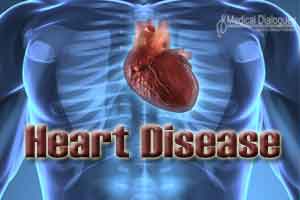- Home
- Editorial
- News
- Practice Guidelines
- Anesthesiology Guidelines
- Cancer Guidelines
- Cardiac Sciences Guidelines
- Critical Care Guidelines
- Dentistry Guidelines
- Dermatology Guidelines
- Diabetes and Endo Guidelines
- Diagnostics Guidelines
- ENT Guidelines
- Featured Practice Guidelines
- Gastroenterology Guidelines
- Geriatrics Guidelines
- Medicine Guidelines
- Nephrology Guidelines
- Neurosciences Guidelines
- Obs and Gynae Guidelines
- Ophthalmology Guidelines
- Orthopaedics Guidelines
- Paediatrics Guidelines
- Psychiatry Guidelines
- Pulmonology Guidelines
- Radiology Guidelines
- Surgery Guidelines
- Urology Guidelines
Cardiology Update: Visible age-related signs and risk of ischemic heart disease

The presence of visible age-related signs of aging such as male pattern baldness, grey hair, and facial wrinkles have been associated with increased risk of ischemic heart disease (ICD) in most but not all studies.
Christoffersen and colleagues tested the hypothesis that visible age-related signs of aging are associated with risk of IHD, myocardial infarction (MI), and death in the general population, independent of chronological age.
A total of 10,885 participants from the Copenhagen City Heart Study cohort aged 20 to 93 years free of IHD were followed from 1976 through 1978 until June 2011 with 100% complete follow-up. During 35 years of follow-up, 3401 participants developed IHD, 1708 suffered an MI, and 7722 died. Age-related signs (greying of hair, facial wrinkles, earlobe crease, xanthelasmata, arcus corneae, and baldness) were assessed by trained staff at baseline who were unaware of the participants’ risk and disease profile.
While all visible age-related signs associated with increased risk of IHD, MI, and total death before adjustment, after multifactorial adjustment for age, known cardiovascular risk factors, and markers of socioeconomic status, only the presence of frontoparietal baldness and crown top baldness in men, earlobe crease, and xanthelasmata remained independently associated with increased risk of IHD or MI.
The risk of IHD and MI increased stepwise with increasing number of age-related signs with multifactorially adjusted hazard ratios up to 1.40 for IHD and 1.57 for MI, for individuals with 3 to 4 versus no age-related signs at baseline . In all age groups in both women and men, absolute 10-year risk of IHD and MI increased with increasing number of visible age-related signs.
In this large prospective cohort study the presence of male pattern baldness, earlobe crease, and xanthelasmata, alone or in combination, was associated with increased risk of IHD and MI independent of chronological age and other well-known cardiovascular risk factors. In contrast, greying of hair and arcus corneae was associated with increased IHD and MI risk after adjustment for age and sex, but not after multifactorial adjustment.Facial wrinkles were not associated with risk.
“This is the first prospective study to show that looking old for your age is a marker of poor cardiovascular health,” wrote the authors. “Further studies on the mechanisms underlying the increased risk of ischemic heart disease in individuals with these age-related signs may provide new insight into the pathogenesis of atherosclerosis, and this may eventually reveal possible new risk factors for ischemic cardiovascular disease.”
References
Dr Prem Aggarwal, (MD, DNB Medicine, DNB Cardiology) is a Cardiologist by profession and also the Co-founder of Medical Dialogues. He is the Chairman of Sanjeevan Hospital in Central Delhi and also serving as the member of Delhi Medical Council

Disclaimer: This site is primarily intended for healthcare professionals. Any content/information on this website does not replace the advice of medical and/or health professionals and should not be construed as medical/diagnostic advice/endorsement or prescription. Use of this site is subject to our terms of use, privacy policy, advertisement policy. © 2020 Minerva Medical Treatment Pvt Ltd